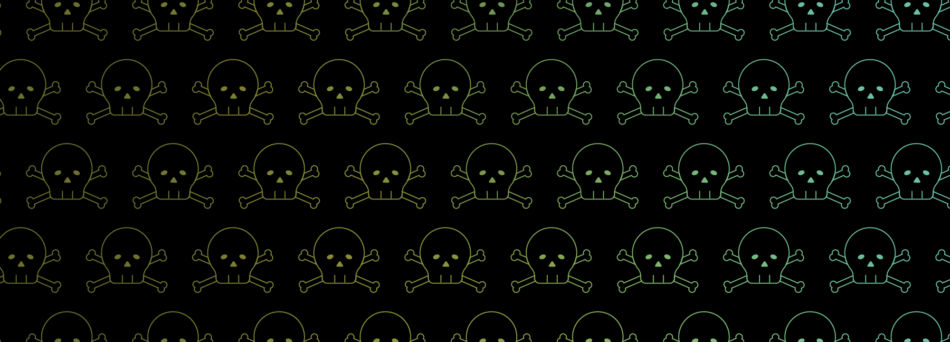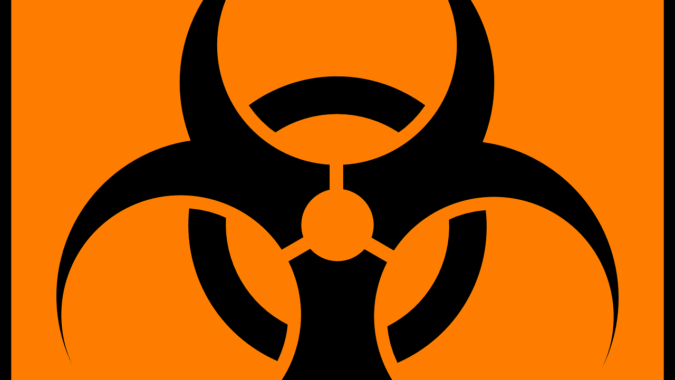
Biohazardous Waste Disposal
Biohazardous waste is dangerous to humans who come into contact with it. Many types of medical waste can be biohazardous, so healthcare facilities especially need clear policies to manage it properly. Laboratories and veterinary clinics also produce biohazard waste. Safe storage, handling, and disposal of biohazardous waste is vital to protect human health.
Disposing of biohazardous waste must be done carefully and responsibly to prevent infection and disease from spreading. Any organisation that produces and handles any type and volume of biohazard waste requires a safe and effective management process. This includes everything from secure storage to removal by licensed personnel and appropriate biohazardous waste disposal.
Discover what biohazardous waste is, how to store and dispose of it responsibly, and arrange collection from your business anywhere in the UK with our services. Read on for more information about biohazardous waste disposal, or get in touch with our experts today for a free quote for collection and disposal – call 0800 211 8390 or contact us online.
Get a free quote
Get a fast FREE quote for biohazard waste collection
- Free quote within 1 hr
- Any type of biohazard waste
- FREE bins and delivery
- We cover all of the UK
What is biohazardous waste?
Biohazardous waste is any dangerous materials that can spread infections and diseases to humans, animals, and the environment, causing harm and contamination due to its biological nature. It’s sometimes referred to as biohazard waste for short. Most biohazardous waste comes from healthcare settings where waste contains potentially infectious elements.
It’s important to understand the difference between biohazardous and hazardous waste to store, manage, and dispose of it properly. Both are dangerous and pose serious health risks to humans, animals, and the environment, but their different nature are what causes these hazards.
Biohazard waste is harmful due to its biological nature and ability to spread infectious diseases, such as via bloodborne pathogens. Hazardous waste is dangerous due to its chemical properties, such as its flammability, toxicity, reactivity, and corrosivity. If the danger is from a biological element, it’s biohazardous waste. If it’s from a chemical element, then it’s hazardous waste.

Biohazardous waste examples
Anything that could spread infection or disease that may harm humans, animals, or the environment is an example of biohazardous waste. Many examples of biohazardous waste come from medical settings such as hospitals, healthcare centres, and pharmacies. Common biohazardous waste examples from clinical settings are:
- Anatomical waste – pathological waste including human tissue, body parts, organs, blood, and other bodily fluids.
- Infectious waste – items contaminated with infectious materials such as PPE, gloves, bandages, dressings, swabs, and wipes.
- Pharmaceutical waste – damaged, expired, or unused medication, including cytotoxic and cytostatic drugs that are dangerous to living cells.
- Sharps – needles, syringes, scalpels, knives, and other sharp items contaminated with blood and other biological material that could be infectious.
There are a couple of other examples of biohazardous waste that aren’t produced in a medical setting:
- Animal waste – body parts, bodily fluids, blood, tissues, and other waste from any type of animal that could harbour infectious agents.
- Laboratory waste – test tubes, culture dishes, and other items used in a lab that may contain microbiological waste, bacteria, parasites, viruses, and pathogens.
How to dispose of biohazardous waste
Disposing of biohazardous waste produced by your organisation must be done carefully to minimise the risk of harm. It’s important to have a policy in place that outlines the steps of what to do and ensures everyone who encounters any biohazard waste knows how to dispose of it safely.
These are the key stages to help manage and dispose of biohazardous waste responsibly:
- Identify biohazardous waste in your business. Determine where you produce biohazard waste, its type, and the volume. This information can help work out the best storage options and collection schedule to manage it effectively. It also ensures you know who is likely to encounter the biohazardous materials, so they can be trained in how to handle and dispose of it safely.
- Segregate and store biohazardous waste in appropriate bins, bags, or containers. You should have containers close to the point of production to dispose of biohazardous waste quickly and reduce the risk of exposure. The containers should be specific to the waste type, such as having sharps bins for any sharp biohazardous waste or infectious waste bags for potentially contaminated PPE, dressings, and bandages.
- Arrange collection of biohazardous waste from your premises by licensed waste carriers. Organise removal on a frequency that meets your needs, depending on the volume and types of biohazardous waste your organisation generates. You must ensure that only licensed waste carriers remove your biohazard waste to operate safely and legally.
- Retain any documents. You should receive a duty of care certificate and/or waste transfer note that includes details of when the biohazardous waste was removed from your site, who by, where it was disposed of, and the disposal method. Keep these documents as you may need them to provide proof of compliance with relevant regulations, and they’re essential if any audits or inspections are carried out.
Biohazardous waste disposal methods
Biohazardous waste can’t be recycled, recovered, or reused due to its potentially infectious nature. It should never go into landfill either, as it can cause contamination while also adding to pollution levels. How biohazard waste is disposed of depends on the facility where it’s transported to and the type of materials.
These are the main methods of biohazardous waste disposal:
- Incineration – the biohazardous materials are burned at incredibly high temperatures to destroy their infectious nature. This is common for sharps and pathological waste. It’s essential for any biohazard waste that can’t be treated to ensure complete destruction and minimise the risk of infection spreading.
- Autoclaving – this is a common method where high temperatures and high-pressure steam are applied to destroy the infectious agents. This sterilises the materials so they can then be sent to energy-from-waste facilities for safe disposal. It’s often used for clinical waste such as PPE, bandages, and dressings.
- Chemical treatment – pharmaceutical waste that’s biohazardous may be chemically treated to neutralise any biologically dangerous elements. This is less common but a possible option for some used, expired, or damaged medication.

Biohazardous waste containers
It’s essential that you use a biohazardous waste container to separate such materials from other rubbish. This reduces the risk of contamination, exposure, and potential harm to human health. There are various biohazardous waste containers available to separate different types of biohazard waste for safe storage before collection and disposal.
We can provide a wide range of clinical waste bins and bags, including sharps bins, to store biohazardous waste securely. This includes biohazardous waste bins and bags suitable for laboratories, vets, and other facilities as well. They’re available in various sizes to suit the volume of waste your organisation produces.
Explore some common types of biohazardous waste containers:
Who produces biohazard waste?
Many businesses and organisations in various industries produce biohazard waste and should have processes in place to manage it safely. Healthcare environments are the primary settings that generate medical biohazard waste due to the treatment, operations, and care they provide. This includes hospitals, care homes, pharmacies, and healthcare centres.
Other places create biohazard waste due to dealing with animal waste. Examples include vets, farms, pet shops, zoos, and anywhere else where animals are present. Laboratories and schools are some of the other facilities that may produce biohazard waste and require appropriate containers, removal, and disposal processes.
Arrange biohazardous waste removal
from your business
If your business produces any type of biohazardous waste, then we’re here to help. At Business Waste, we can provide free bins, bags, and containers to separate and store any type and amount of biohazardous waste. There are no delivery or hire charges – you only pay for collection.
Fill each container with relevant materials and then arrange Biohazardous waste removal on a daily, weekly, or fortnightly basis. Licensed waste carriers will remove your waste at an agreed time and day and transport it safely to an appropriate waste management facility for disposal.
You’ll receive a free duty of care certificate for proof and peace of mind that your biohazard waste is removed and disposed of responsibly. Find out more about biohazardous waste removal or get a free quote for collection from anywhere in the UK today – call 0800 211 8390 or contact us online.
Get a fast and free quote
Get a fast FREE quote for biohazard waste collection
- Free quote within 1 hr
- Any type of biohazard waste
- FREE bins and delivery
- We cover all of the UK
Published 18th July 2025 by Graham Matthews.